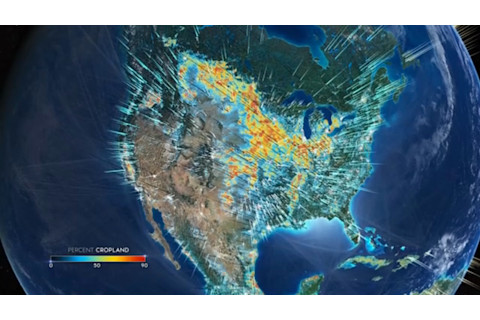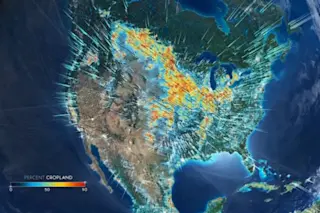The Global Water System Project at the University of Bonn, in Germany, just released a video on water in the Anthropocene. If you can get past the melodramatic narration, there is a pretty stellar data visualization, based on a lot of federal agency data, that illustrates how the human footprint has changed the global water cycle.

Nearly 70 percent of usable freshwater resources go to irrigating fields and raising livestock. A satellite image shows the percentage of the U.S. covered in crops. Photo courtesy gwsp.org/ www.anthropocene.info.
Some of the ways civilization has made its mark on the hydrosphere:














